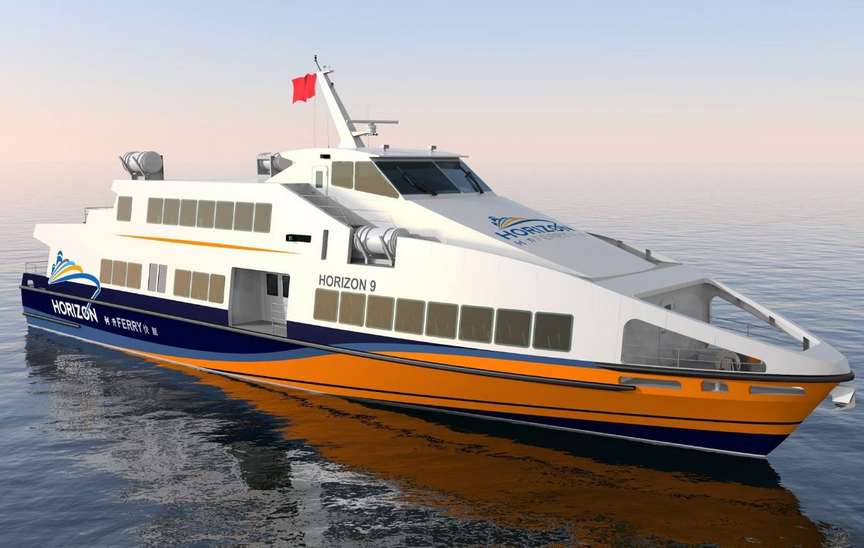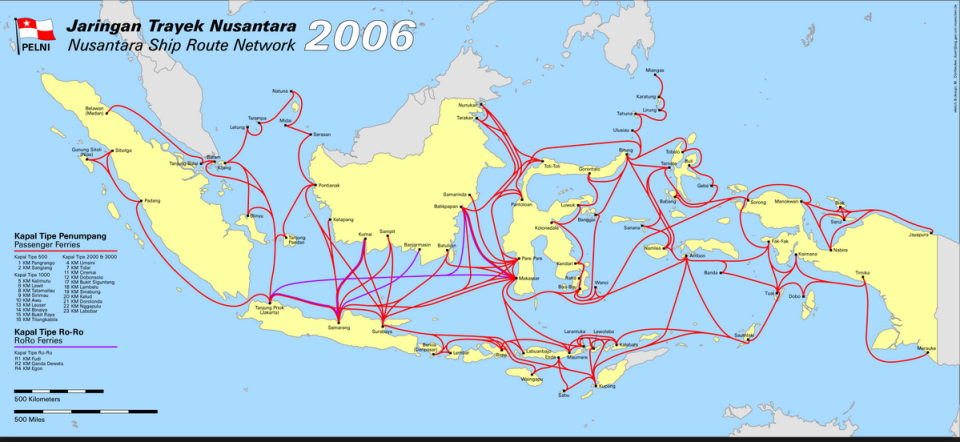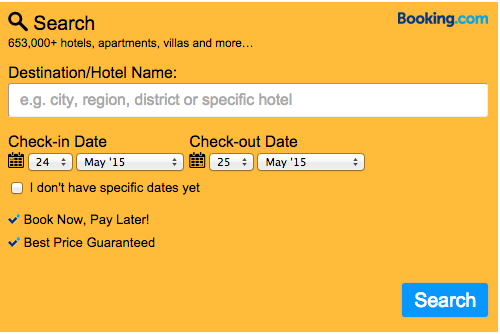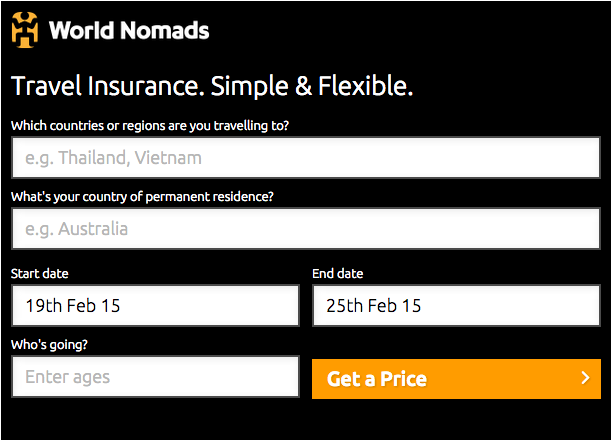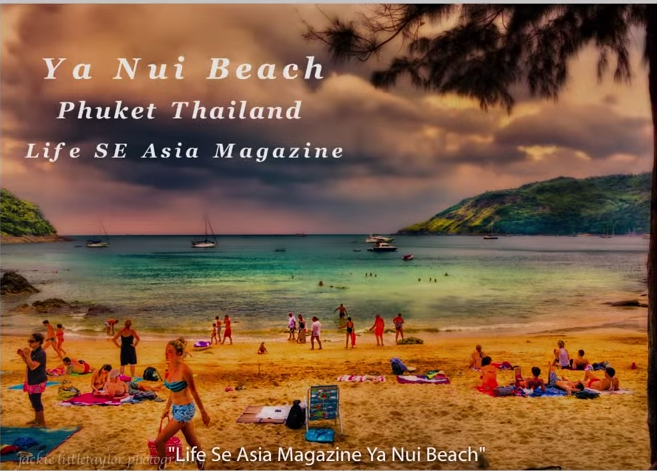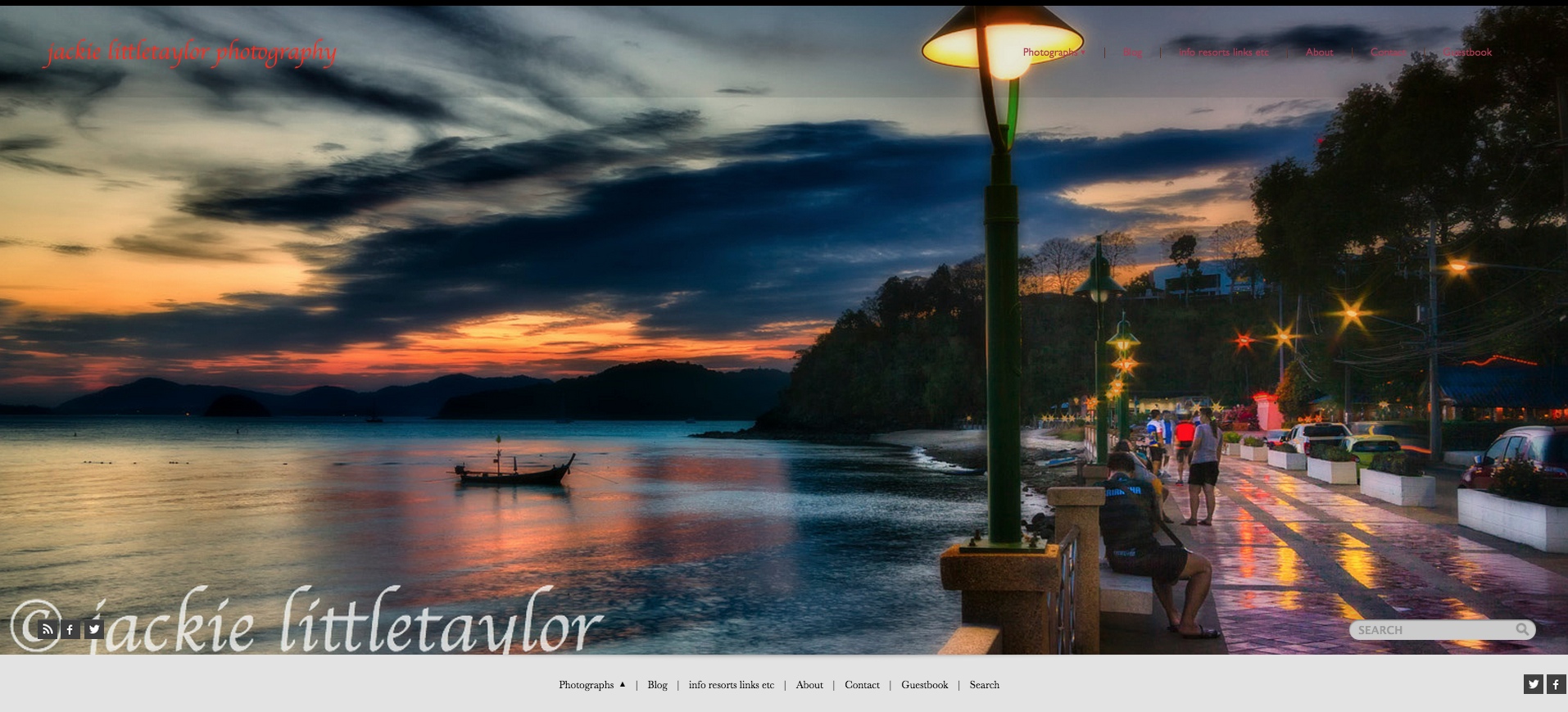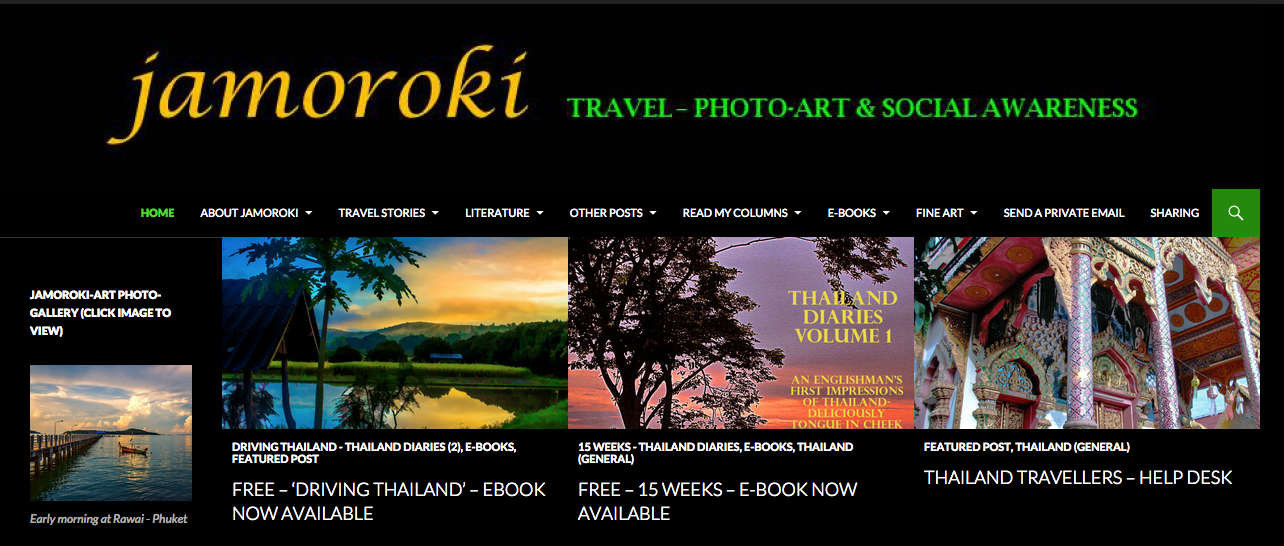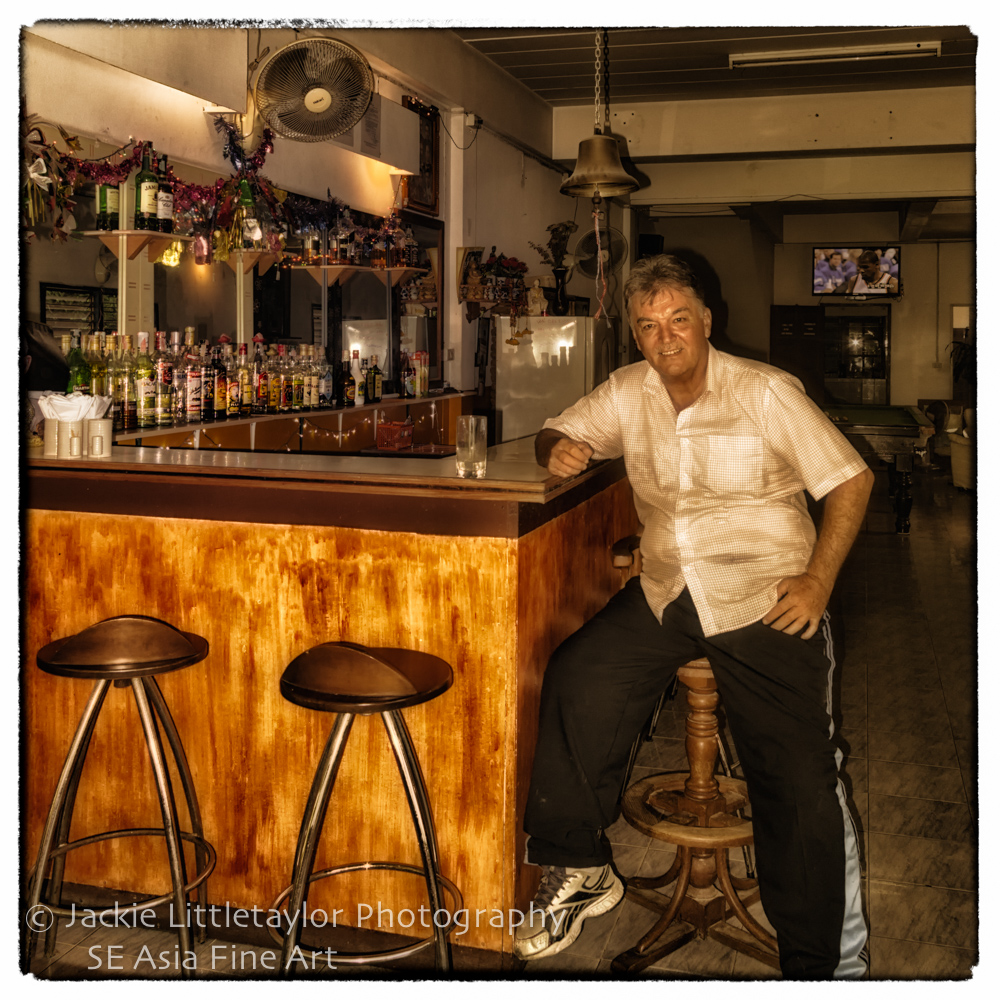Buses
Long distance buses
Inter-city buses depart from and arrive at specific terminals: travellers have to find out which terminal serves their destination. Questioning locals is helpful, but if there is a language barrier, updated travel guides are very reliable. Individual country guides also provide information about bus terminals and their destinations.
For overland travel, most Indonesians use buses, so terminals are found in most centres, including small villages. Some terminals are easy to find as they are close to downtown, while others are located on the outskirts.
Between cities or villages, it is best to arrive at a bus terminal from early morning to midday as there are many buses that depart during these hours. For busy, shorter routes, expect to wait for up to an hour before midday. Buses become less frequent during the course of the afternoon and by sunset there are no buses at all.
Bus trips of eight hours or less
Smaller buses that hold 20 to 30 passengers in cramped conditions are used and leg room is very limited. These buses have no toilets, but drivers make regular stops.
Small buses can do many routes a day, but there is no schedule. A traveller arrives at the terminal, boards the bus, and when the driver is satisfied that the bus is full, it departs. Travellers can buy a bus’s empty seats. This is often done in remote areas where the wait can be hours, and if a quota of seats is not filled, the bus driver cancels the trip.
Overnight buses
For long overnight travel, travellers can expect large, modern buses. There are three classes:
- Economy It usually runs between towns and pick up passengers on the road side, therefore be prepared to have frequent stops and have your bus journey taking forever to reach destination. It can always be hot and cramp.
- Executive Also known as patas, this bus officially do not stop to pick up road-side passengers and go all the way straight to destination. There are air-conditioned express bus that are more comfortable. You should be able to get a seat for these bus in most major city.
- VIP This bus is air-conditioned and the most comfortable on the lot. It can vary though depending on price categories, having different facilities like reclining seats, movie or snacks. These buses should be booked in advance either via travel agents or yourself and you can choose your seats. There are also luxury overnight buses for longer distance travel and could be a good option to save time and even save on hotel for budget or time-tight travelers!
Sometimes only economy and executive are available. The difference between executive and VIP is primarily leg room. Both have air conditioning, but buses with a VIP class also have seats that recline into beds. Air conditioning can be very cold, and travellers are advised to have a jacket. Buses do not have toilets. Instead, drivers stop regularly every few hours.
Safety Generally it is alright to travel with buses in Indonesia but even wherever you are, general common sense applies. Try to carry as little amount of items as possible and always keep an eye on your belongings. There are also lack of baggage space in economy buses so you might want to get luxury buses if you have big luggage.
Bus trips across islands
There are longer, cross-island routes, for example, Denpasar in Bali to Yogyakarta, or across islands such as Java, Sulawesi and Sumatra. There are also bus trips that span two islands or more, and include one or more ferry crossings.
Higher quality buses are generally used for longer trips and some companies require passengers to make reservations and buy tickets a day or two before departure. Offices can be difficult to find as they are not necessarily in the centre of town. Tickets can also be bought at the terminal without making any reservations, but this depends on the bus company.
Bus fares are relatively cheap, and it is worth paying more for a better class of bus travel if it is available. Travellers must be warned that these trips are very long and often uncomfortable. However, the advantage is that they can stop along the way and visit for as long as they like.
Luggage on buses
It is best to travel with a small backpack. Larger luggage might have to be stowed outside the bus, because many Indonesians carry large amounts of luggage and storage space under the bus fills up quickly. Luggage is then tied to the top of the bus and can be hard to locate. It sometimes falls off during transit, or is stolen while passengers are seated inside and the bus is stationary. Travellers need to be vigilant about their luggage and make their presence known to luggage handlers.
Public Bus Travel
A bus’s number and destination is posted on the front and back of the bus. While Indonesia’s largest cities have bus services, they are generally difficult for tourists to use:
- Finding any printed information about bus routes, schedules, and addresses of bus terminals is difficult
- Signed bus stops do exist, but bus stops do not have any information about routes
- Buses usually stop anywhere along a road. Passengers wait on a safe stretch of road along the bus route and wave down the driver
- There are set bus routes, but there is no schedule and buses circulate continuously instead
Robberies and assaults are not uncommon on buses in cities like Jakarta. Beggars and vendors are present at every stop as well.
Buses are often poorly maintained and can break down. Exhaust fumes also pollute the interior of buses. Because bus terminals in Indonesia serve not only buses but local transport as well, they are crowded and busy.
Bus fares
Do not pay the bus driver. Once seated, a bus conductor circulates and takes the fare. Fare amounts are set, but rarely posted. Foreigners can be asked to pay more than the set fare, especially if it is a long bus ride. The best protection is to know the fare ahead of time, and to remain firm about paying the set fare. Always carry change, as there is no change given for large denominations of cash.
There are also public transportation in Jakarta. The newest project, Transjakarta is the series of bus lines operating on certain routes with the bus is running from the right side of the lane in its designated lane. There are 8 corridors in operation and you can move anywhere you like at a flat rate as long as you don’t get out of the bus shelter. At the time of updates, it costs Rp3500 per ride. When the first corridor open (between Blok M and Kota), it is the favourite among office workers, but when more corridors open and people only need to pay a flat rate to get to their destination around the city, more and more people use the service and it’s somewhat can cause inconvenience because of the crowded buses. For tourist staying in the city center, they can move around the town (such as to Jakarta History Museum near Kota station, Plaza Senayan near Bundaran Senayan station, and Plaza Indonesia near Bundaran Hotel Indonesia station) easily. Now, the busway connect you to virtually any public places in the city such as Ancol recreation park, Ragunan zoo, to Blok M shopping area. You just need to study where you should study the transfer point and which station you should alight at. See www.rutebusway.com to learn about the routes. Its in Indonesian so will have to translate.
Jakarta Monorail
Jakarta monorail is a planned two-line monorail system that would span 24 km in Jakarta, Indonesia. As we all know Jakarta is notorious for its traffic where sometimes spending few hours in the car is a normal experience. In fact you have not traveled in Jakarta if you haven’t being stuck in the road for an extended amount of time.
Hopefully with this new monorail project, that previously had been stopped and now revived earlier this year in February 2013, will be completed and alleviate the problem for the locals and to aid travelers in their visit here in Jakarta.
Jakarta Monorail Track Simulation, Indonesia
The monorail will have two lines – Green line is around 14 km with 16 stations and will run in the South of Jakarta and Green line of around 10 km will run from East Jakarta to West Jakarta. There will be two interchange stations that will allow passengers to change between these two lines and also onto Jakarta Busway and Jakarta railway network.
This project is projected to be completed in 2-3 years, so let’s all look forward to a better connected Jakarta. From there maybe it can grow to be the hub of traveling in Indonesia besides Bali, Indonesia’s current most famous tourist attraction.
Ferries/Boats
Indonesia has the world’s largest archipelago with over 17,000 islands. It has numerous ports, and some ports have multiple harbours. Boat travel is thus a major form of transport for most Indonesians.
Privately-owned Passenger Boats
Boats are either traditional wooden boats made by local boat builders, or second-hand steel boats. Almost all are privately-owned and business is not conducted in a uniform way. Many boats are in need of repair: despite regulations, safety rarely comes first. They are also routinely overbooked, especially during national and religious holidays.
For longer trips, steel boats make up the bulk of Indonesia’s larger-sized passenger boat fleet. They usually have three decks and can legally carry about 700 people:
- The top deck has semi-private cabins
- The lower decks are barracks-style: long rows of non-partitioned, double-tier bunks that hold hundreds of people and their luggage
Boarding and disembarking requires balance and agility. Wooden gangplanks are long, steep and very narrow, with two-way traffic. Many gangplanks have no hand rails and bounce with the weight of people walking across them. At the same time, porters carry passengers’ luggage or consigned cargo.
Tickets
Tickets must be booked in advance through a ticket office located in or nearby the harbour. Unless it is a peak travel time, tickets are available up to and including the day of departure. But cabin accommodation sells out quickly, and should be booked in advance.
Food
Food is usually served three times a day for voyages of 24 hours. Sometimes snacks are sold, but it is best to buy food and water before boarding. Another option is to buy food from vendors.
Medical problems
If a person has a health problem that requires quick hospital access, travel by boat is not appropriate. Once at sea, boats are far from any emergency response. Cell phones are usually out of range within an hour of departure from a port.
Pelni
Indonesia’s national shipping company, Pelni, is state-owned and operated. Boats travel the entire archipelago: east-to-west and north-to-south. Each ship completes a circuit of several ports over a two-week period. At the end of the two weeks, boats return to the original port of departure, and the circuit starts again. Boats are German made, and can carry up to 5,000 passengers. Animals and cargo are also transported. There are six classes of accommodation; to book a higher class cabin, make reservations in advance.
Pelni has four cabin classes, followed by economy class, which is the modern version of deck class. It is sometimes possible to book a sleeping place in economy; otherwise, you’ll have to find your own empty space. Mattresses can be rented and many boats have a ‘tourist deck’ upstairs. Even economy class is air-conditioned and it can get pretty cool at night, so bring warm clothes. There are no locker facilities, so you have to keep an eye on your gear.
First class is luxury-plus, with only two beds per cabin. Second class is a notch down in style, with four to a cabin, but still very comfortable. Third class has six beds to a cabin and 4th class has eight. Each of these classes has a restaurant with good food, while in economy you queue up to collect an unappetising meal and then sit down wherever you can to eat it. It pays to bring some other food with you.
Economy class is OK for short trips. Fourth class is the best value for longer hauls, but some ships only offer 1st and 2nd or 3rd class in addition to economy. As a rough approximation, 4th class is 50% more than economy, 3rd class is 100% more, 2nd class is 200% more and 1st class is 400% more.
It’s best to book at least a few days in advance, although you can book tickets up to a week ahead. Pelni is not a tourist operation, so don’t expect any special service, although there is usually somebody hidden away in the ticket offices who can help foreigners.
As well as its luxury liners, Pelni has Perinitis (Pioneer) ships that visit many of the other ports not covered by the passenger liners. The ships are often beaten-up old crates that primarily carry cargo, but they can get you to just about any of the remote islands, as well as the major ports. They offer deck class only, but you may be able to negotiate a cabin with one of the crew.
Read more: http://www.lonelyplanet.com/indonesia/transport/getting-around#ixzz3KEYvvVQ7
Pelni offers services that are rarely found in Indonesian ship travel. There is a doctor on board, and a cinema.
Tickets
Ticket prices dictate the quality of accommodation:
- The best accommodation is a private room for two with its own bathroom and shower
- There are two to three lower economy decks. Sanitation is often poor as the communal bathrooms can flood. Food is also of a lower quality
- If tickets are oversold, passengers are allowed on board, but without a bunk. Many passengers end up sleeping on deck
Pelni ships are extremely slow and travellers should expect to spend several days on board. Make sure to check the length of time for the trip.
There are many Pelni offices across Indonesia. Reservations should be made only through an authorised Pelni office, and in person.
Car and Passenger Ferries
Some ports offer ferry services for cars, trucks and buses. They also accept passengers, but sleeping accommodation is rarely available. Those who board with a vehicle sleep in their vehicle. Passengers may walk around on deck.
Tickets
Tickets can be bought at one of the offices in the harbour complex.
Food
Passengers should buy their own food and water before boarding. It is rarely provided as part of the passage.
Ferries in Bali
Pelni lines has a ferry once every two weeks which departs from Benoa harbour in Denpasar.
Destinations for other ferry services in Benoa harbour include:
- Bima, Sumbawa
- Gili Meno, Lombok
- Kupang, Timor
- Lembar, Lombok
- Maumere, Flores
- Senggigi, Lombok
- Surabaya, Java
- Waingapu, Sumba
Taxi Services in Jakarta
Taxis in Jakarta are run by private companies; therefore the fleets are unique and have different colour schemes. There are also several types of taxi; budget, regular, executive, and special taxis. They differ in the kind of vehicle used and in cost.
Budget taxis can be identified by a distinctive ‘Tarif Bawah’ sticker. This sticker means that this taxi charges the lowest approved fare by the government (FYI, Jakarta government sets up the range of lowest to highest fare for transportation company). However, some people believe that sometimes the drivers cheat on the meter (so that the meter runs faster), bring tourists circling around the city, or even possibly rob passengers (several cases of taxi crime has been reported, mostly by those using this type of taxi, although of course this can happen with any taxi company).
Taxis without ‘Tarif Bawah’ sticker charge a higher rate. The first 2km is charged at Rp6,000 and Rp 300 for every subsequent 100meters.
The middle-up class taxi are available by booking through 24hour call center and can be found at the airport, 4 star hotels and lifestyle shopping malls. The meter have a flag fall rate of Rp.7.500 with Rp.440 for every subsequent 100meters.
Executive taxis can be found at the airport, 5 star hotels, and upscale shopping malls. The meter charges are considerably more expensive than regular taxis. The flag fall rate (first 2km) is Rp9,000 with Rp550 for every subsequent 100meters. Hotels can also pre-arrange fixed priced journeys which can be charged to your hotel room. This is especially convenient for airport / hotel transfers.
Special taxis; are new type of taxi. They use a fleet of luxury minibus (such as Toyota Alphard) and are suitable for families or groups. However, the fleet is still small and it’s hard to spot one on the street. They can be reserved by telephone though.
There are also fixed price transfer in an un-metered vehcles: the service can be reserved in advance and is usually paid for at a kiosk in the arrivals zone when you check in (your name will be on a board) . As it is a fixed price it may work out cheaper than an executive taxi, if traffic is heavy. Additionally if you want to do so shopping before going to your home or hotel you can hire the vehcile for 3 hours “as directed” and stop off on the way. When ordering a taxi you need you to pay minimum payment (if the fare on the meter is less than the minimum amount). Also, the passenger is responsible for any toll road charges.
Taxi & Booking Taxi Company Reservation Number
Blue Bird Taxi (blue cab) 021-79171234
Silver Bird Taxi (black cab, premium taxi) 021-7981234
White Horse Premium Cab (black cab) 021-54374078
Express Taxi (white cab) 021-26509000
Tiara Express (maxi-cab style premium taxi)021-26508000
Transcab (orange cab) 021-58355500
Taxi2Airport (prebook taxi online through http://www.taxi2airport.com)
Accessible taxis
Disabled- and elderly-friendly with or without wheelchair for an easy ingress and egress as well as tranfer from wheelchair to car seat or from car seat to wheelchair, to and from anywhere inside the city of Jakarta including but not limited to and from airport, hotel, sightseeing, etc from the one and only
Adapted Car Hired 021-68290939 http://adapted-car-hire.itrademarket….
There are several accessible booking taxi, including wheelchair lift and passenger side entry ift up seat as well as passanger swivel seat, while upon pre request, there are also specific adapted car hired with hand control and or left foot accelerator for disabled driver.
Driving in Indonesia
Traffic drives on the left in Indonesia.
Indonesian driving habits are generally only slightly less atrocious than India or Vietnam. Lanes and traffic lights are happily ignored, passing habits are suicidal and driving on the road shoulder is common.
Renting a car in Indonesia is cheap compared to renting in many other countries, and fuel costs remain relatively low, despite recent fuel price increases: the fixed price for gasoline (premium) is INR8,500/L and for diesel (solar) is INR7,500/L. Fuel price will increase very high, it can reach more than INR12,000/L for gasoline if you buy it at a fuel kiosk on rural areas (far from the city and not in an official gas station). For example in remote areas such as palm tree plantations in Sumatera or Kalimantan, very rarely are there official gas stations there.
To drive a car yourself, an International Driver Permit is required in addition to your home country issued driving licence. Consider renting a car with a driver, the additional cost is quite low and having a traffic accident whilst driving in Indonesia will certainly spoil your trip.
Road conditions and road maintenance in Indonesia is poor, especially so outside the major cities. During rainy season, major roads in Sumatra, Kalimantan and Sulawesi are often flooded for several weeks. Even if road conditions are good in major cities such as Jakarta, their driving habits are still dangerous, often causing traffic accidents.
The minimum age for driving both a car and a motorbike in Indonesia is 17 years, and a driving licence is called a SIM or Surat Izin Mengemudi. However, cars and motorbikes are not covered by the same licence.
Many embassies advise their citizens not to drive in Indonesia, but to hire a driver instead as driving can be very dangerous. Many foreigners choose to ride motorbikes, as they are cheap and convenient, and easier to negotiate in congested traffic compared with cars.
Anyone driving a motor vehicle of any kind in Indonesia must have a valid driving licence. An international driving licence is accepted in Indonesia and should be accompanied by a home country licence.
Car Rental / Car Hired Reservation Number
Although renting a car to explore the city might not be a great idea (as traffic jams are horrendous and Jakartans don’t drive patiently), but it can be considered if you wish to have a ride to outer parts of Jakarta. Some car rental also offered chaffeured service .Car rental counters can be found at airport arrival hall.
ZoeCarBooking - Your personal chauffeur in Jakarta - http://www.zoecarbooking.com
Europcar 021-56943855 - 7 http://www.europcar.co.id
Trac Astra Rent A Car 021-26605333 http://www.trac.astra.co.id/
Golden Bird Limousine & Car Rental (Thrifty licensee in Indonesia) 021-7944444 (bookings are also available for Golden Bird Bali and Bandung) http://www.bluebirdgroup.com/passenge…
Cipaganti Car Rental 021-720 4616 / 720 4766 http://cipaganti.co.id/index.php/car-…
Avis 021-3142900 http://www.avis.co.id/
Jakarta Car Rental 021-68432778 http://www.jakartacarrental.biz
Jakarta Airport Transfer 021-5141 3272 / 021-9062 2754 http://www.jakartaairporttransfer.com
Laguna Trip 6281806706785 www.lagunatrip.com
Motor Bike
You’ll find that motorcycles are readily available for hire throughout Indonesia. In the tourist centres they can be rented from around 30,000Rp per day, but in most places the locals rent out their own motorcycles to earn a few extra rupiah. Rental charges vary with the type of bike and the length of hire. The longer the hire period, the lower the rate; the bigger or newer the bike, the higher the rate.
Motorcycles are almost all between 90cc and 125cc, with 100cc the average size. You really don’t need anything bigger; the distances are short and the roads are rarely suitable for fast speeds.
Indonesia is not the place to learn how to ride. The main highways are hectic, especially in Java and Bali. Combined with all the normal hazards of motorcycle riding are narrow roads, unexpected potholes, crazy drivers, buses and trucks that claim road ownership, children who dart onto the road, lumbering bullocks, dogs and chickens that run around in circles and unlit traffic at night. Take it slowly and cautiously around curves to avoid hitting oncoming traffic – this may include very large and heavy buses, buffalo, herds of stray goats and children. Keep to the back roads as much as possible, where riding can be pleasurable.
You need to have a licence, especially to satisfy travel insurance in case of an accident, though you’ll rarely need to show it.
Some travel insurance policies do not cover you if you are involved in an accident while on a motorcycle. Check the small print.
Insurance
Rental agencies and owners usually insist that the vehicle itself is insured, and minimal insurance should be included in the basic rental deal – often with an excess of as much as US$100 for a motorcycle and US$500 for a car (ie the customer pays the first US$100/500 of any claim). The more formal motorcycle and car rental agencies may offer additional insurance to reduce the level of the excess, and cover damage to other people or their property, ie ‘third-party’ or ‘liability’ cover. Your travel insurance may provide some additional protection, although liability for motor accidents is specifically excluded from many policies.
Read more: http://www.lonelyplanet.com/indonesia/transport/getting-around#ixzz3KEcfH9Vg
Indonesia’s geography makes travel difficult and time-consuming, and its archipelago is called “The Ring of Fire” for a reason: surrounded by seas with strong currents, the islands are often mountainous and densely covered in rainforest. The high frequency of earthquakes, floods, and volcanic eruptions make the country very disaster prone. Religious holidays make travel difficult because of the large number of Indonesians who travel throughout the country. The beginning and end of Ramadan, and the Christmas holiday (mid-December to mid-January) are peak travel times for locals. Schools close in July for two to three weeks, when domestic travel peaks as well.
Sources:
A beginner’s guide to
Train travel in Indonesia . . .
welcome comments and welcome for you to share your journey

